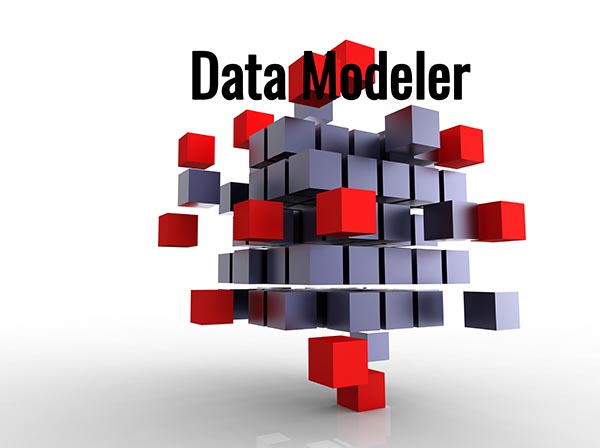Who Is A Data Modeler And What Skills Does He Have?
Data Modeler: For Some Time Now, data modeling has been the focus of companies as one of the most important skills in Data Science And In Interacting With Databases.
Data scientists need data modeling to analyze data because data modeling is the foundation for collecting clean, interpretable data on which businesses can make crucial decisions.

What is data modeling, and why do you need it?
Data modeling refers to managing, evaluating, and measuring the data streams entering or leaving the database. It is one of the essential parts of a big data project since data scientists are tasked with creating the necessary space for data. Data modeling involves structuring the data space and evaluating the factors needed for data modeling. In short, data modeling refers to managing data in an organization.
Data modeling specifies how the data should be used, how they should communicate with each other, how they should be generated, and what story they should tell.
Due to data’s impact on an organization’s performance, decisions about data modeling should be made early in the data collection process. The organization decides what story each data set will tell and on what basis the data should be collected to tell a complete story.
Most software applications use data-based modeling processes to provide a seamless customer experience. As the world of business and the economy change, it is essential that the data you maintain changes in a way that closely matches the end customer’s needs. Ensuring a perfect customer experience is a factor that makes many organizations successful, and most of them work on it. However, accurate data modeling can only be done based on an ideal strategy.
Data modeling process
Data modeling is a complementary tool for analyzing business and implementing an efficient database. A data model covering all the primary and essential aspects provides a detailed description of each entity. Designing a database includes producing three main designs: conceptual, logical, and physical. Data Definition Language (DDL) converts these designs into a working database.
Although different methods can be used to create data models, two fundamental and practical approaches are available to practitioners to produce the best model. These two models are known as bottom-up and top-down data modeling processes.
- Bottom-up model: Bottom-up models, also known as integrative models, are created based on repeated reengineering. This method usually starts with existing structured data forms and basic reports. However, this model may not be efficient for data sharing, as it does not accurately refer to different departments or parts of an organization.
- Top-down data model: Top-down data models are used in an abstract methodology that collects information about experts in different departments. The system this data model is built on may not apply to all entities, but the model can be used as a shining example or reference point.
What do you need to become a data modeler?
The skills required for data modeling differ entirely from those necessary for programming and systems management. While programmers and administrators need sufficient expertise in technical areas, data modelers need to be knowledgeable about logical skills. The skills a data modeler needs include:
- Conceptual design
- Abstract thinking
- User communications
- Internal communication
Based on these requirements, an excellent data modeler is a person who does not have the necessary software and systems knowledge but can demonstrate conceptual and abstract thinking. All data modelers must have strong communication skills.
Organizations are looking to hire people with strong communication skills because modelers are required to translate and balance all user needs. Additionally, they should document their documentation in a way that is easy for all users to understand.
Education
Many employers are looking to hire modelers with bachelor’s degrees in information science, applied mathematics, or computer science. The above qualifications indicate that a data modeler has at least a basic knowledge of basic computer concepts.
However, some employers expect people interested in this job to have completed various courses in information systems management or business management. In addition, modelers must be skilled in database management and know how to implement dialogs and searches in a database and obtain the desired results. Before starting work as a data modeler, you should consider learning the following skills:
1. Digital logic:
Digital logic, or Boolean logic, is the basis of all modern computer systems and programming languages. It converts complex problems into simple “yes/no,” “true/false,” or “0/1” values. Digital logic is the underlying concept of programming. For this reason, having this skill in cleaning and organizing an unstructured data set is very important.
2. Computer architecture and organization:
This skill is directly related to the previous skill. Logic, architecture, and organization interact, and you must properly understand them to optimize performance and work processes. Computer architecture refers to a logical set of rules allowing a programmer to connect the hardware, software, and internal workings. A comprehensive understanding of computer architecture and organization enables you to achieve maximum productivity when working with data.
3. Data representation:
Data representation involves breaking down complex information into more straightforward bits, similar to encoding numbers. It allows more accessible data collection, manipulation, and analysis, saving time and money.
4. Memory Architecture:
After you understand how data is represented and encoded, storing it for future retrieval is essential. Memory architecture refers to how binary digits are stored in computer cells, and more complex information is stored in spreadsheets and databases. The vital part of memory architecture is combining speed, durability, reliability, and affordability while maintaining data integrity.
5. Familiarity with modeling tools currently used within organizations:
The list of devices available to help with data modeling is extensive. However, some tools, such as Power Designer, Enterprise Architect, and Erwin, perform better than the examples. Similar Organizations use these tools to structure and define data for better and optimized results. Familiarity with these tools can help save considerable time and enable you to analyze your data sets more effectively.
6. Adapt to new modeling methods:
Data modeling continues to evolve. Differences in infrastructure, data sources, and models will likely become more complex in the coming years. The ability to learn quickly and adapt modeling methods to each other are essential skills for staying current.
7. SQL language and its implementation:
SQL is the name of the structured conversational language; as a modeler, you must completely master it because this standard programming language is used to manipulate, manage, and access data stored in relational databases. Its ease of development and portability made SQL the standard language for implementing database dialogs. In short, it is impossible to model data without basic knowledge of SQL.
8. Adequate experience using database systems:
Relational database management systems (RDBMS) have extensive data management capabilities, such as quickly storing and retrieving data. Experience working with managing a complex data environment is essential.
9. Exemplary communication skills that help you navigate organizations with complex hierarchies:
Data modeling is not just about having technical skills. You must apply your knowledge of complex technical data so that non-technical people can understand your words.
Data modelers must communicate with all levels of a business to best implement intelligent changes and improve business operations. Understanding the nuances of business policies while accurately applying them to one’s field of work is essential but even more critical.

